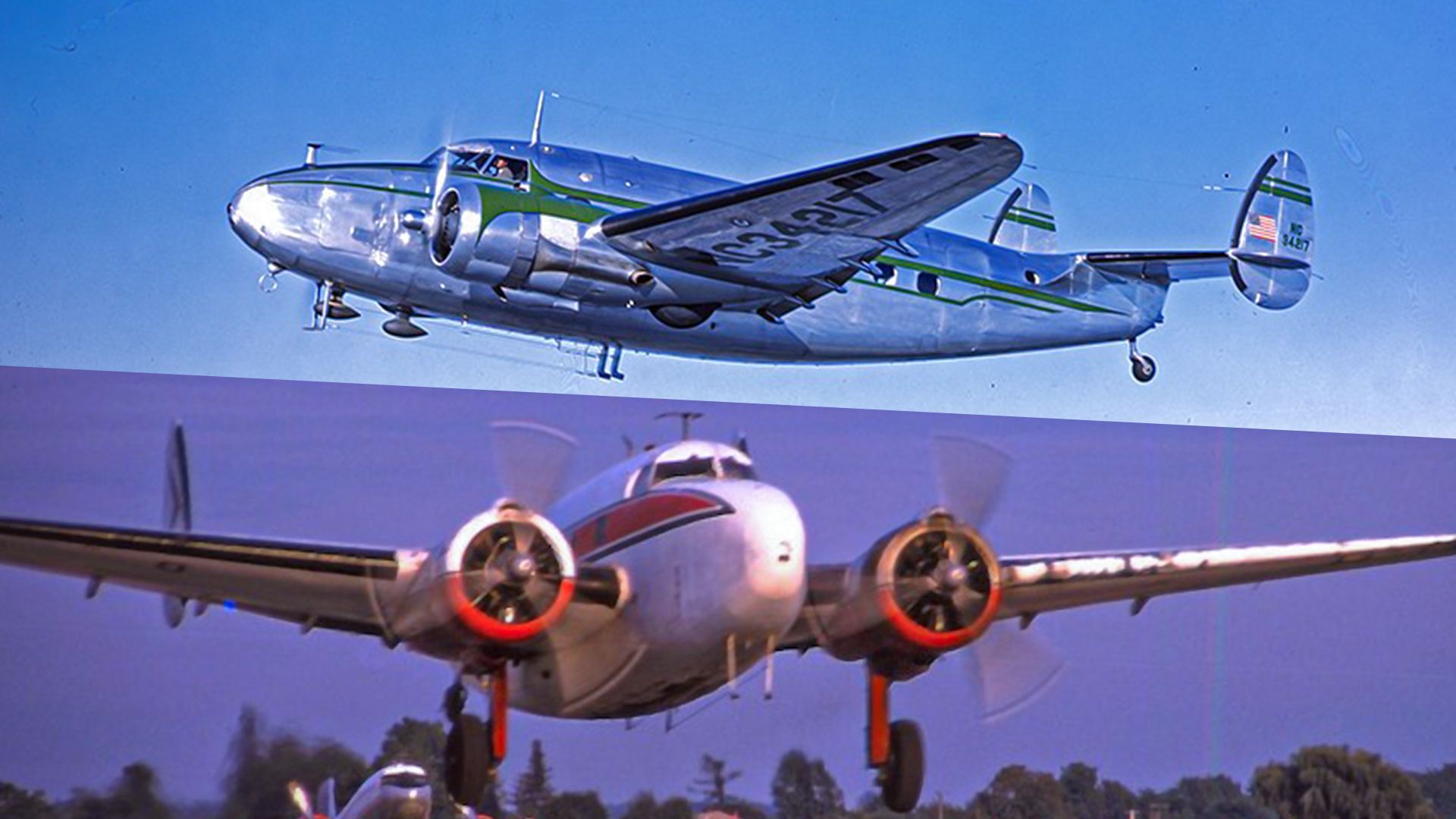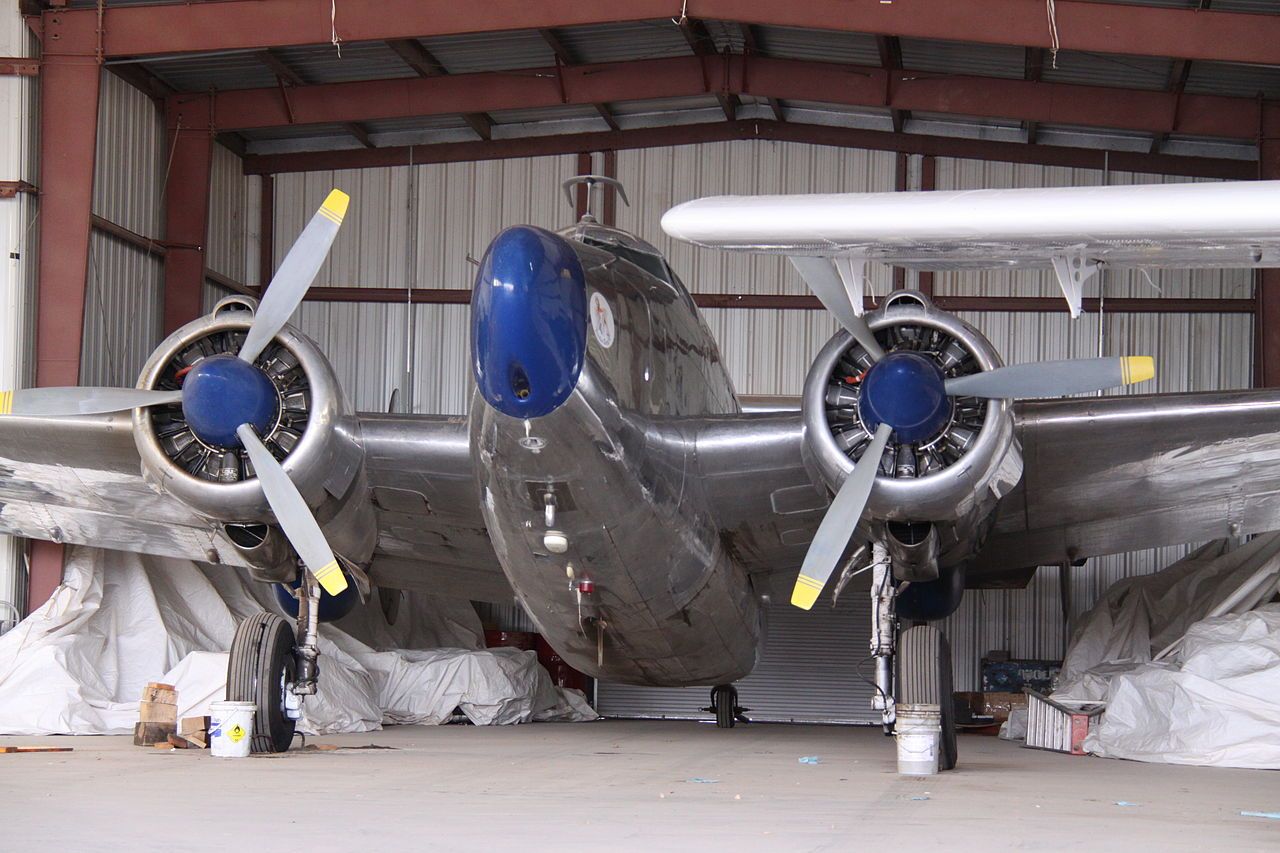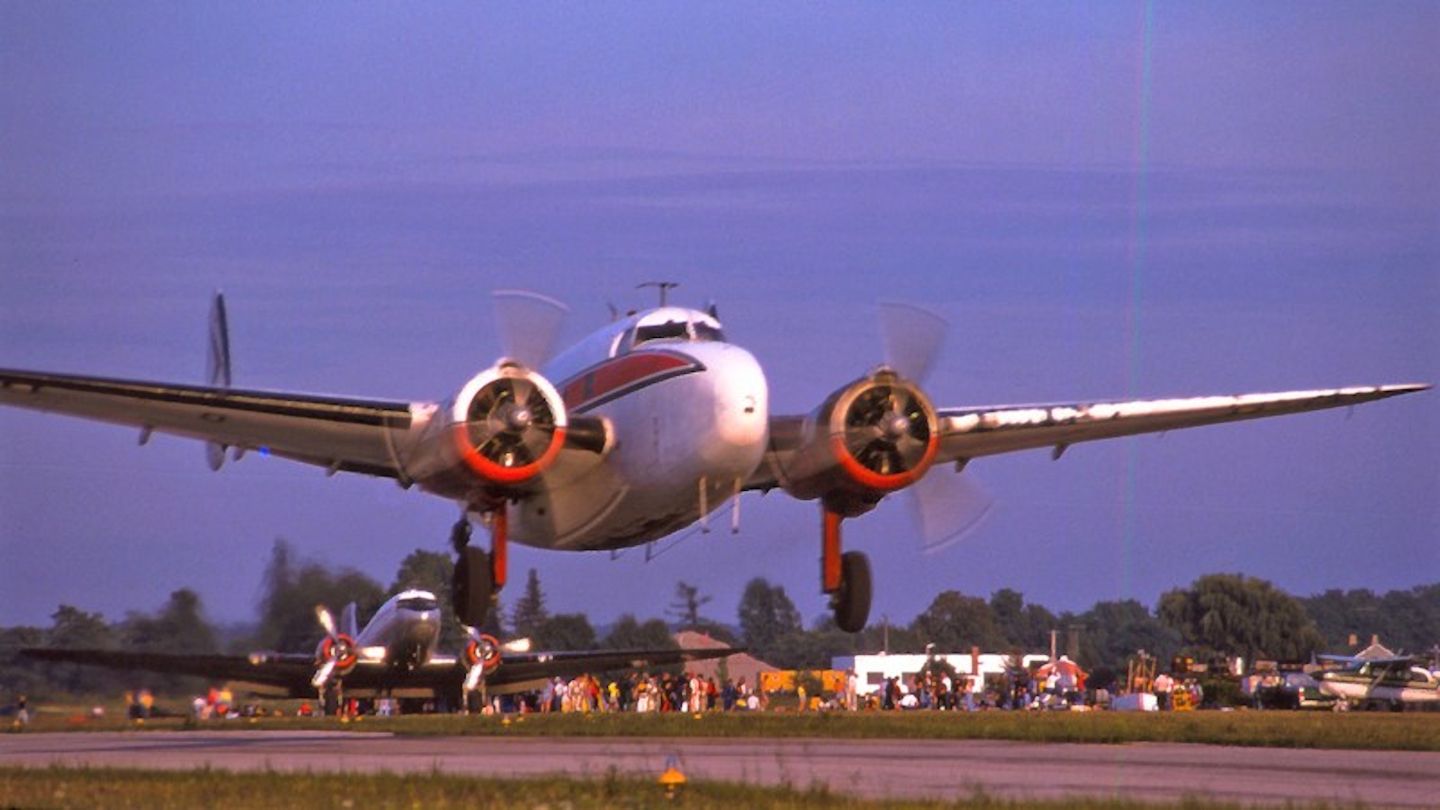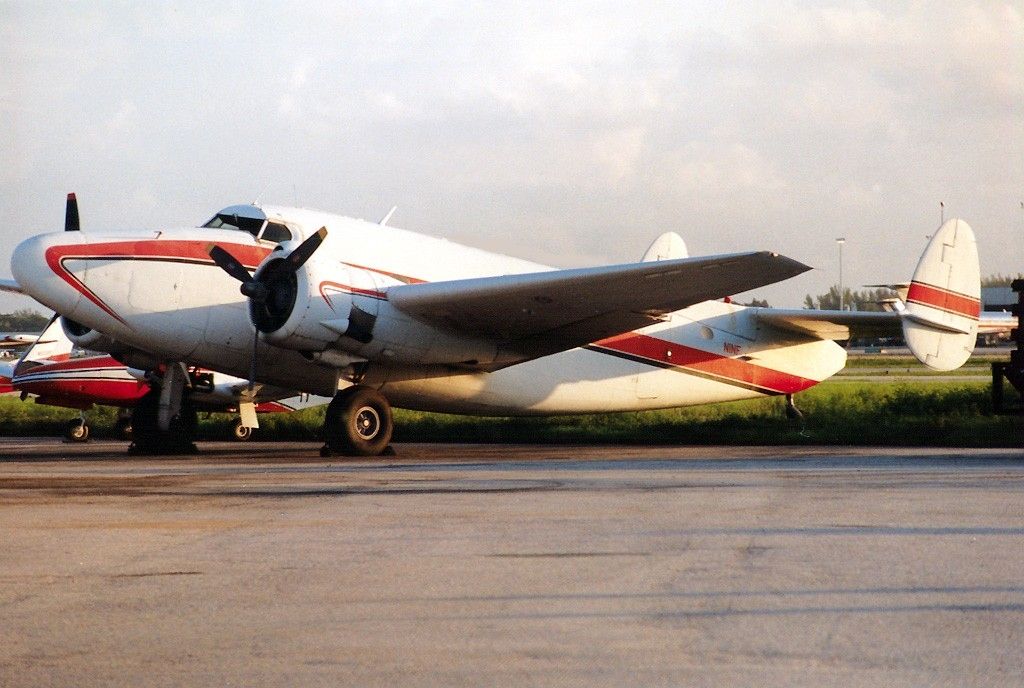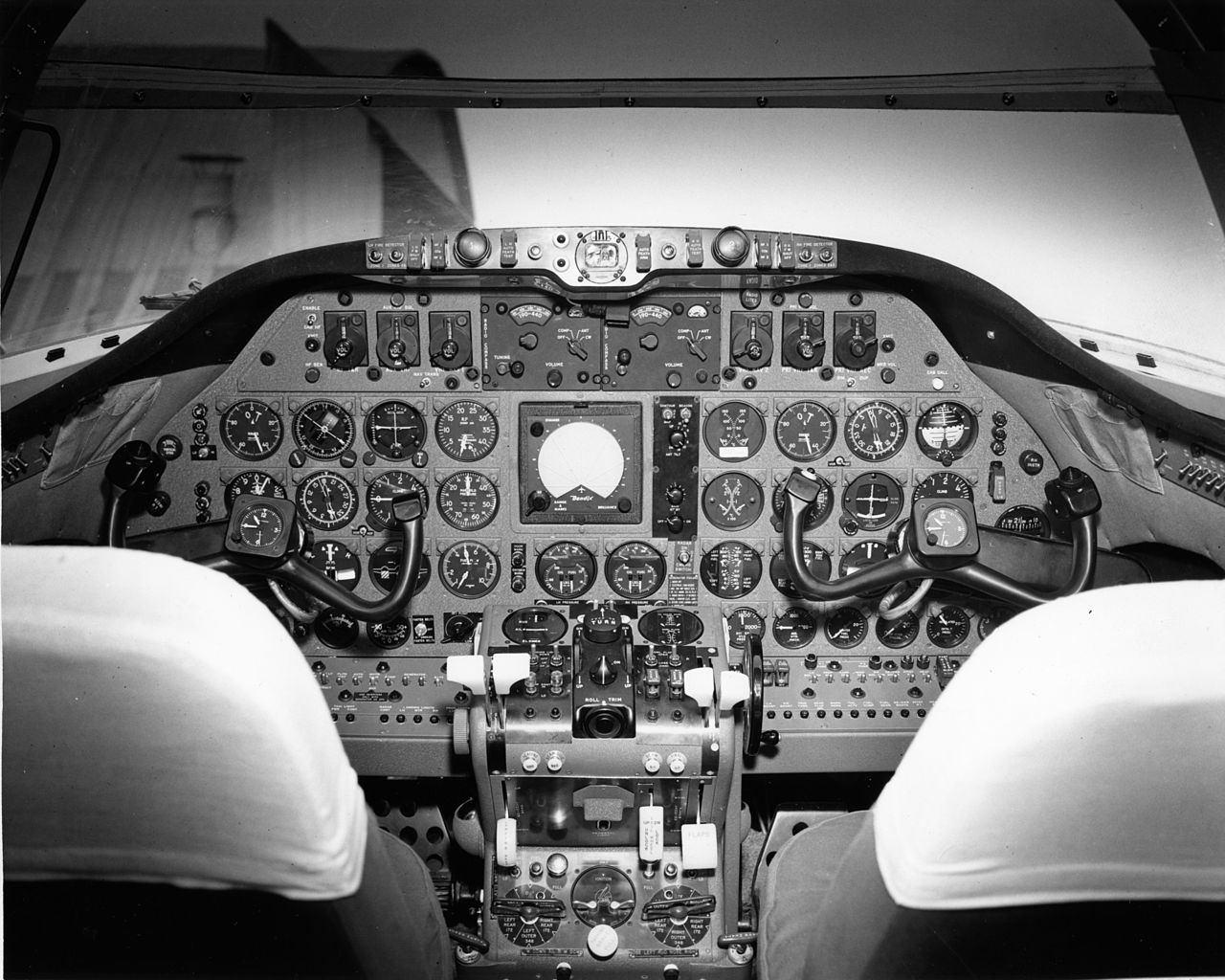Summary
- Lockheed Model 18 Lodestar stretched fuselage to add two rows of seats, improved economics.
- Lodestar was a sudden success with global airlines, selling over 100 to carriers and air forces.
- Over 625 Lodestars were built, prominent with US Army and US Navy, with 32 variants made.
The Lockheed Model 18 Lodestar was a World War II-era passenger and military transport aircraft developed in the late 1930s. Designed to compete with the then-widespread Douglas DC-3, the Mode 18 was developed in numerous variants, including ones for the US Army and the US Navy.
1
A fuselage stretch to improve economics
Fuselage length: 49 ft 10 in (15.19 m)
- Crew: Three
- Capacity: 18 passengers
- Length: 49 ft 10 in (15.19 m)
- Wingspan: 65 ft 6 in (19.96 m)
- Height: 11 ft 10 in (3.61 m)
- Empty weight: 12,500 lb (5,670 kg)
- Gross weight: 17,500 lb (7,938 kg)
- Max takeoff weight: 21,000 lb (9,525 kg)
The Lockheed Model 18, the Lodestar transporter, was developed from the Lockheed Model 14 Super Electra, which had proven to be disappointing in terms of operating costs in its initial years. Despite the Super Electra’s excellent performance, the aircraft was very expensive to operate. The larger Douglas DC-3, which was in widespread use at the time, was more economical than the Super Electra.
Lockheed decided to stretch the Super Electra’s fuselage by 5 feet 6 inches (1.68 m) to add two more rows of seats to compensate for the high operating cost. In comparison to the 12-passenger seating on the Model 14, the C-60A Lodestar accommodated 18 passengers. That also increased the aircraft’s Maximum Takeoff Weight (MTOW) by 3,500 lbs (1,590 kg) to 21,000 lbs (9,525 kg).
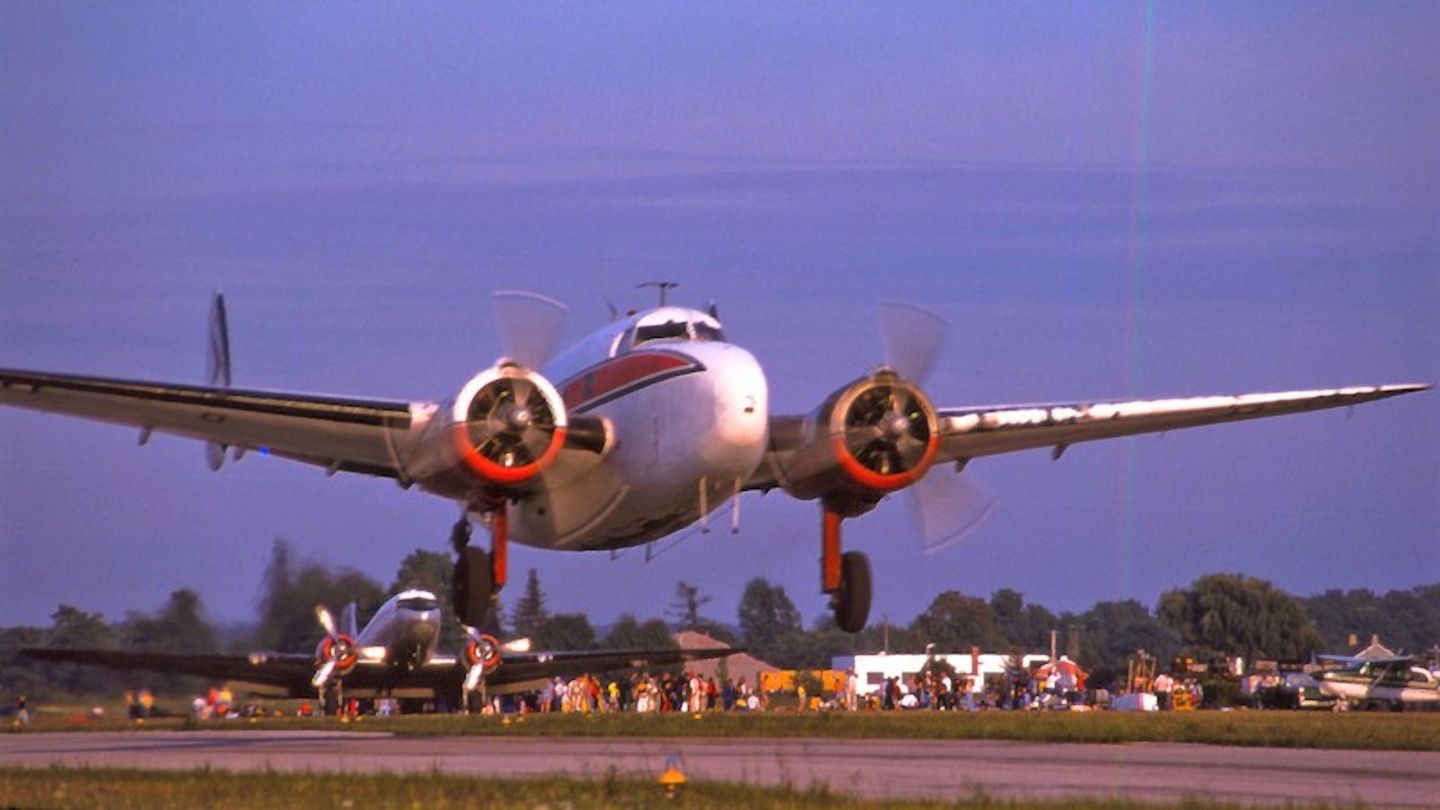
Related
The Story Of The Versatile Lockheed Model 18 Lodestar
How the Lockheed Model 18 struggled to compete with the DC-3 and went on to serve as a crop duster and with skydiving clubs.
2
The first few aircraft were conversions
A batch of Model 14s were returned by Northwest Airlines
Northwest Airlines purchased a total of 11 Model 14’s, some of which were returned back to Lockheed after a series of crashes involving the type. While the aircraft had a high cruise speed and excellent performance, the engines generated a little too much power, making the seat-mile cost too high. Moreover, the aircraft had multiple issues, including tail flutter which caused one of the Northwest’s Model 14 crashes.
Before the actual Model 18 flew, Lockheed converted three ex-Northwest Model 14s into the Model 18 design. The first of these flew in September 1939. The other two aircraft were converted and flew in modified condition later that year. The first newly built Model 18 flew in February 1940.
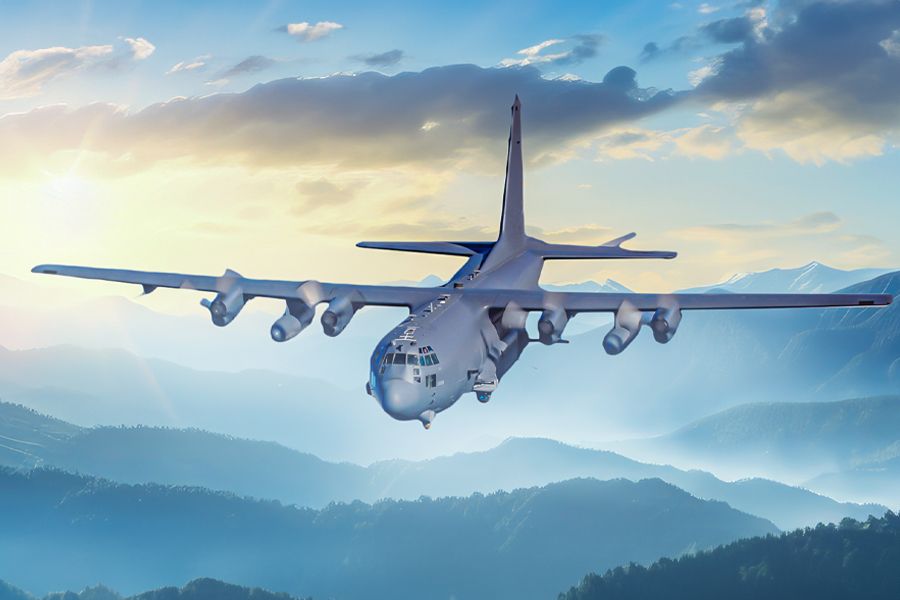
Related
What Role Does The Lockheed AC-130 Gunship Play In The US Air Force?
The type serves a unique operational purpose.
3
A sudden success with global airlines
Over 100 examples were sold to global carriers and air forces
- South African Airways: 21
- New Zealand National Airways Corporation: 13
- Trans-Canada Air Lines: 12
- BOAC: 9
- Royal Netherlands East Indies Army Air Force: 29
The Lodestar received its type certification a month after its first flight (newly built aircraft). It entered commercial service with Mid-Continent Airlines in March 1940. The aircraft was a sudden success, particularly with the additional two rows of seats as planned by Lockheed. The Model 18 showed greatly improved economics, with a similar seat-mile cost as the Douglas DC-3.
Despite its excellent performance, only 32 Lodestars were ordered by US carriers. A large chunk of commercial variants went to global carriers and air forces. South African Airways, New Zealand National Airways Corporation, and Trans-Canada Air Lines remain the largest operators of the type.

Related
4 Celebrities Who Flew The Lockheed Jetstar
Over 200 JetStars were produced.
4
More than 30 variants
Over 625 Lodestars were built, including commercial and military variants
- Commercial airplanes | 7 variants | Over 150 built
- US Army Lodestars | 18 variants | Over 380 built
- US Navy Lodestars | 7 variants | Over 90 built
Not only was the type popular among global airlines, but military forces, including the US Army and the US Navy, received large numbers of Lodestar aircraft. The size and economics of the aircraft greatly suited the forces of the time, including the Royal Netherlands East Indies Army Air Force, which acquired 29 units. A total of 32 variants were built, including a few experimental versions.
Most variants of the Lodestar were for the US Army, and models differed in engine types, engine sizes, and thrust ratings. The most common one was the C-60A, configured as a paratrooper transport for the Army. Powered by Pratt & Whitney R-1830 Twin Wasp engines, 325 examples of this model were built.
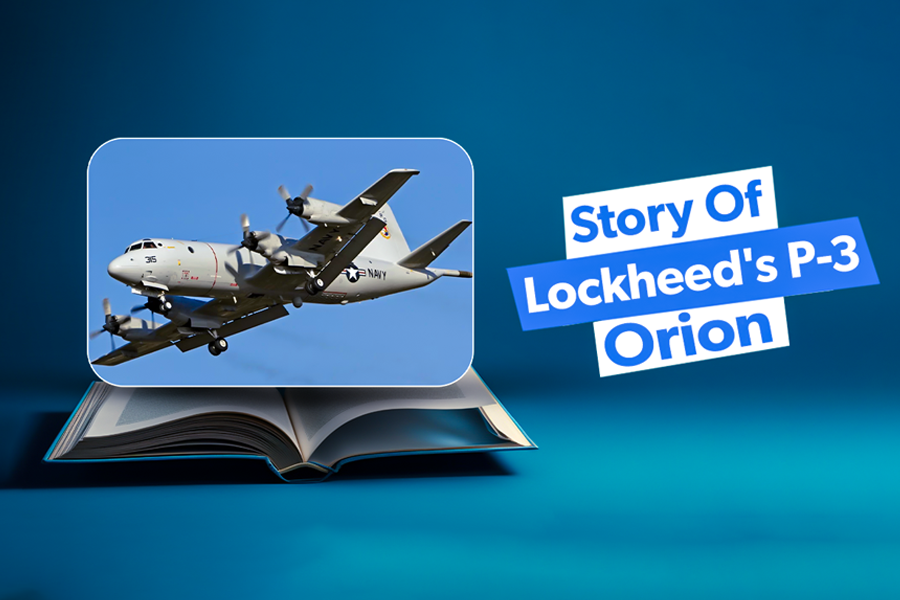
Related
Developed From The L-188 Electra: The Story Of Lockheed’s P-3 Orion
The aircraft was originally built for the US Navy.
5
A World War II Trainer and Transporter
- Maximum speed: 266 mph (428 km/h, 231 knots) at 1,750 ft (530 m)
- Cruise speed: 200 mph (320 km/h, 170 knots)
- Range: 2,200 NM (4,000 km, 2,500 miles)
- Service ceiling: 30,100 ft (9,200 m)
- Climb to 10,000 ft (3,000 m): 6.6 minutes
The Lockheed Model 18 was a World War II hero when it came to training troops or transporting personnel and freight. Its greater MTOW and capacity enabled large quantities of military freight to be transported between bases. According to the National Museum of the US Air Force,
“During World War II, the Army Air Forces used the aircraft for training and for transporting personnel and freight. First flown in 1940, the Model 18 was originally designed as a successor to the Lockheed Model 14 and the earlier Model 10 Electra. The Army began ordering military versions of the Model 18 in May 1941.”
“After the war, many military Lodestars were declared surplus and sold to private operators for use as cargo or executive transports. The C-60A on display was flown to the museum in 1981.”
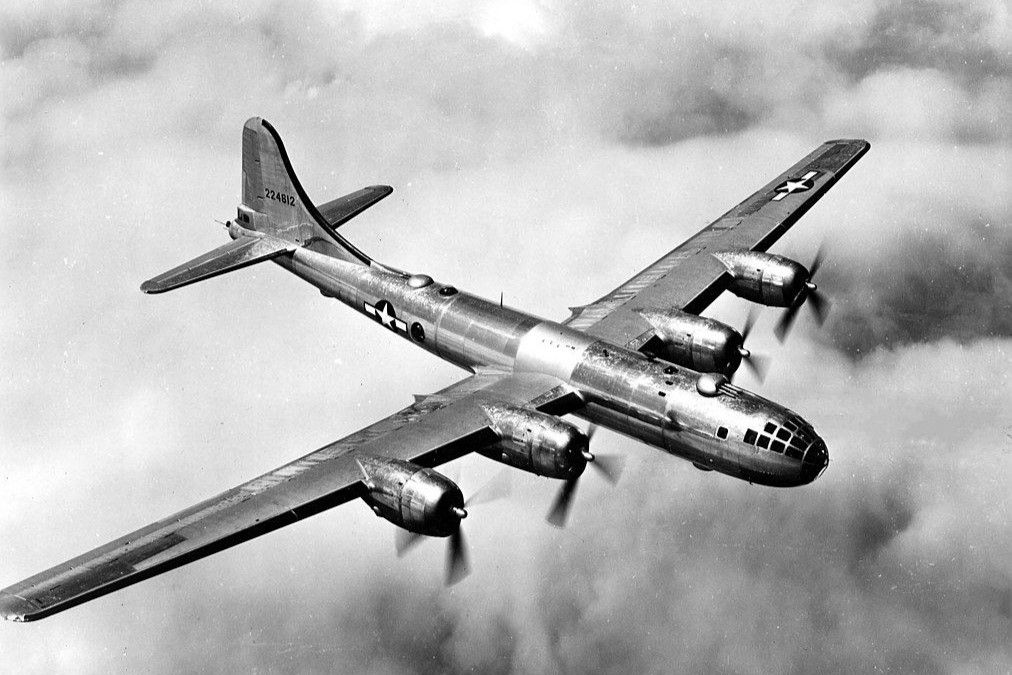
Related
World War II: Looking At The Boeing B-29 Superfortress’ Arrival In The China Burma India Theater
Operation Matterhorn required a herculean logistical effort that helped develop future airlift doctrine.
What are your thoughts on the fast facts about the Lockheed Lodestar? Share your views in the comments section.

